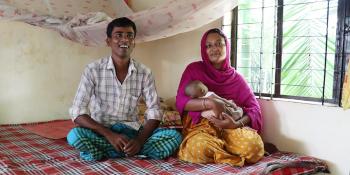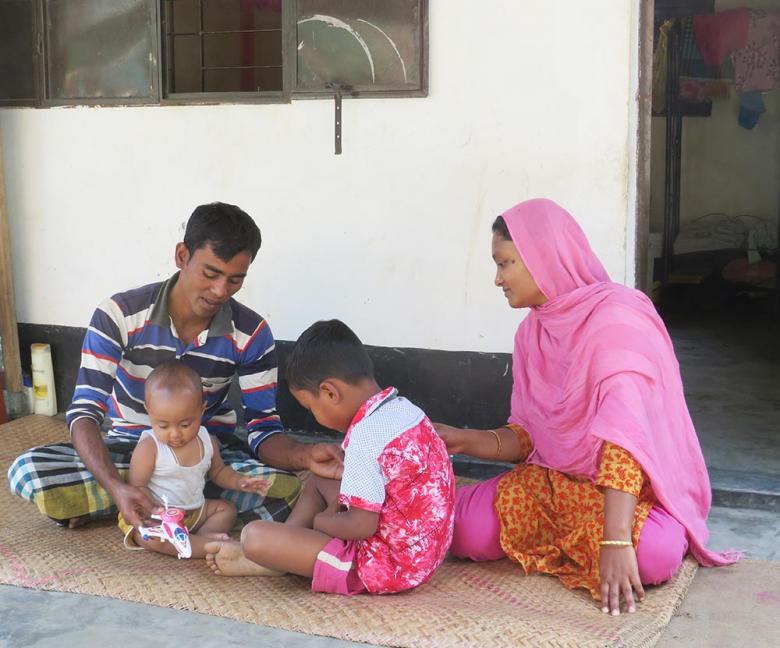
Home safe home
After nine years, Morsheda’s wish for a daughter was fulfilled when her family welcomed baby Tayeba. “It was a good thing that we were able to move to our new home before I gave birth. With all the hospital expenses, having a house to go home to gave me comfort,” she said.
Her family of four lives in Laxmirchor Uttorpara village, Jamalpur district, north of Bangladesh’s capital Dhaka. They moved into their Habitat home in September 2018.
Morsheda, 28, could still recall her living conditions in the early years of her marriage. “I was around 19 when I got married to Babar and moved to a home that was worn, and very wonky,” she said of the house made of jute sticks and tin sheets. “It did not had any strong door or pillars to protect us from big storms or even strong rain. Very often, the rain water made our floor wet and unhealthy.”

(From left) Babar with son Mahim and wife Morsheda used to live in a house made of tin sheets and jute sticks with little protection from storms and rains. Photo: Habitat for Humanity Bangladesh.
Now that they have a safe and secure home, her daughter can rest easy. When she was a baby, Tayeba was very calm and quiet and slept most of the day, said her mother. “I enjoyed giving her a warm bath daily. After that I laid her down on the bed gently inside the mosquito net to keep her safe from insect bites and dengue,” Morsheda shared. “I want to raise Tayeba the best way I can so she can grow up healthy.”
Morsheda’s desire echoed the views of U.S. peditrician Dr. Megan Sandel, associate professor of pediatrics at the Boston University School of Medicine, and Jonathan Reckford, CEO of Habitat for Humanity International. In an essay, they argued that a healthy home is a vaccine that provides both immunity and resilience.
When Tayeba was an infant, her brother Mahim, 6, said he was waiting for her to grow up so they could play together. Now the siblings can enjoy time with each other on the porch of their home.

Babar and his wife Morsheda with their daughter Tayeba and son Mahim spending time at their porch.
Morsheda’s husband Babar, 31, is a seasonal construction worker who painted the walls of their house after it was built. Sometimes she contributes to his monthly income of about 5,000 taka (almost US$60) by doing sewing at home.
Babar said: “I used to be so scared about our safety...Now I know my family is always safe, even if I am away for work.”
“The greatest asset for Bangladesh is its people, especially its population of children,” stated a 2018 study on maternal and child health in the country. With a stable home, Morsheda and Babar can look to creating brighter lives for themselves and their children. They are among more than 220 families in Jamalpur district who have been supported by the Korea International Cooperation Agency in a three-year project that began in January 2018.
Under the KOICA-Habitat Bangladesh partnership, new houses were constructed and homes were renovated. Household toilets were also built and community tube wells were installed. In addition, community members received training in water, sanitation and hygiene and livelihood skills such as carpentry, electrical wiring and sewing.
Habitat for Humanity has been working in Bangladesh since 1999. Find out more at habitatbangladesh.org or connect via facebook.com/HabitatBD